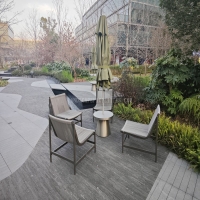Welcome to the website for landscape facilities products and knowledge.
What are the key differences between hand-tied and machine-tied springs in landscape sofa bases?
When choosing a landscape sofa, the type of springs used in its base significantly impacts comfort, durability, and overall quality. Hand-tied springs and machine-tied springs are the two primary options, each with distinct advantages and drawbacks.
Hand-Tied Springs:
Hand-tied springs are individually knotted by skilled craftsmen, creating a flexible and responsive support system. This method allows for precise tension adjustment, resulting in superior comfort and longevity. Hand-tied springs conform to body weight more naturally, reducing sagging over time. However, this labor-intensive process makes hand-tied springs more expensive and time-consuming to produce.
Machine-Tied Springs:
Machine-tied springs are mass-produced using automated processes, offering a cost-effective alternative. While they provide consistent support, they lack the customization and resilience of hand-tied springs. Over time, machine-tied springs may lose tension faster, leading to reduced comfort. However, their affordability makes them a popular choice for budget-friendly furniture.
Key Differences:
1. Durability: Hand-tied springs last longer due to meticulous craftsmanship.
2. Comfort: Hand-tied springs adapt better to body contours.
3. Cost: Machine-tied springs are more affordable but may require replacement sooner.
4. Production Time: Hand-tied springs take longer to manufacture.
Ultimately, the choice depends on your budget and priorities. For premium comfort and longevity, hand-tied springs are ideal. If cost is a concern, machine-tied springs offer a practical solution.
Related search:

Recommendation
Metal structure rattan chair without armrests for single person, with woven seat and backrest.